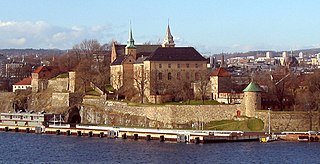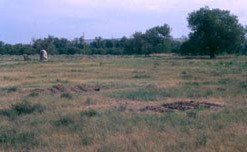 W
WThis is a list of forts and camps in Colorado, established by military, commercial and other interests.
 W
WZahir al-Umar al-Zaydani, alternatively spelled Daher al-Omar' or Dahir al-Umar was the autonomous Arab ruler of northern Palestine in the mid-18th century, while the area was still nominally part of the Ottoman Empire. For much of his reign, starting in the 1730s, his domain mainly consisted of Galilee, with successive headquarters in Tiberias, Arraba, Nazareth, Deir Hanna and finally Acre, in 1746. He fortified Acre, and the city became a center of the cotton trade between Palestine and Europe. In the mid-1760s, he reestablished the port town of Haifa nearby.
 W
WThis is a list of forts in New France built by the French government or French Chartered companies in what later became Canada, Saint Pierre and Miquelon, and the United States. They range from large European-type citadels like at Quebec City to tiny fur-trade posts.
 W
WThe Latvian word for hillfort is pilskalns, from pils (castle) and kalns (hill).
 W
WThis is the list of all ouvrages of the Alpine Line or Little Maginot Line along the Franco-Italian border, organized by sector and type of fortification. Ouvrage translates as "works" in English; publications in both English and French refer to these fortifications in this manner, rather than as "forts". An ouvrage typically consists of a distributed series of concrete-encased strongpoints defending a region, linked by tunnels, as opposed to a fort, which typically refers to a defended surface enclosure, which may have underground galleries as an adjunct.
 W
WThis is a list of bastion forts.
 W
WThe United States and its preceding colonies built numerous coastal defenses to defend major cities, ports and straits from the colonial era through World War II. Some listed were built by other nations and are now on United States territory.
 W
WMany buildings in Egypt can be put under the classification of castles, citadels, forts, and fortifications.
 W
WNumerous military installations have been located in Michigan since the earliest French fortified trading posts appeared to modern National Guard bases. The Native Americans of the area established only temporary war camps although some were quite large. The earliest French bases were quite small and short-lived. Later some installations would be in use for over a century and spread over large areas.
 W
WNorwegian fortresses or fortifications have been constructed from some of the earliest recorded periods, down through the 20th century. The geography and topography of glacially carved, mountainous Norway constrain both the sea and the land routes which an aggressor must follow. Natural strong-points, such as rock outcroppings at Halden, Tønsberg and Trondheim make excellent bases for fortification.
 W
WThe following is a partial list of forts and castles in Pakistan:
 W
WThe Pretoria Forts consists of four forts built by the government of the South African Republic (ZAR) just before the outbreak of the Second Anglo-Boer War around their capital of Pretoria.
 W
WThe following is a list of forts in South Dakota.
 W
WForts and fortifications in Sri Lanka date back thousands of years with many being built by Sri Lankan Kings, these include several walled cities. With the out set of colonial rule in the Indian Ocean, Sri Lanka was occupied by several major colonial empires that from time-to-time became the dominant power in the Indian Ocean. The colonists built several western styled forts, mostly in and round the coast of the island. The first to build colonial forts in Sri Lanka were the Portuguese, these forts were captured and later expanded by the Dutch. The British occupied these Dutch forts during the Napoleonic wars.
 W
WThe following is a list of forts in the U.S. state of Tennessee.